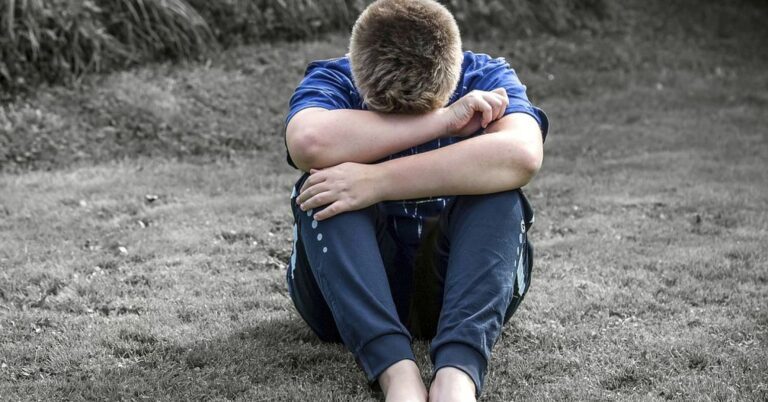A joint document from the World Health Organisation and the United Nations recently concluded that electroconvulsive therapy (ECT) “is not recommended for children, and this should be prohibited through legislation.”
I have previously addressed the use of ECT on adults and the overuse of psychiatric medications on children. Here, I ask whether the use of electricity to cause convulsions as a psychiatric treatment is ever justified for children or adolescents.
ECT has been banned altogether in some countries, including Slovenia and Luxembourg. But in most countries where it is still used (the vast majority), its use on children is not prohibited. There are some isolated local exceptions, including California (banned for children under 12), Texas (under 16), and Western Australia (under 14).
In most countries, however, it is still legal to use ECT on children and teenagers. For example, the information leaflet published by the Royal College of Psychiatrists here in the U.K. states: “Children between 11 and 18 rarely develop the kind of mental illnesses that respond well to ECT, but for a small number who do, ECT can be helpful.”
The use of ECT on adults varies significantly between and within countries. So do the percentages of overall usage for under 18-year-olds, from 0.2 percent in the U.K. and 1 percent in the USA, to 6 percent in Asia. Our own audit of ECT in England found that four of the 35 National Health Service Trusts that responded reported using ECT on just one person under 18 years old. The other 31 (89 percent) treated no children or adolescents at all. Dorset actually had a policy not to use ECT on people younger than 18. This all stands in stark contrast to two recent ECT studies out of China reporting on 110 and 278 children who had received the treatment (average age 15 in both studies) from just one hospital in each study.
My case against the use of ECT on youth relies on the research, or lack thereof, about efficacy and safety.
Efficacy
There have only ever been 11 comparisons of ECT with a placebo (where the general anaesthetic is given but the electric shock is not). They were all prior to 1985, very small, and woefully flawed. The results were, at best, mixed. None found any benefit beyond the end of treatment.
Sadly, after 85 years of ECT being used, there has never been a single placebo-controlled study on children or adolescents. So, although Mind, the U.K.’s largest mental health charity, argues that “ECT is rarely effective for children aged between 11 and 18,” we really have no idea whether it is any better than a placebo.
The tiny number of psychiatrists still in favour of using ECT on children have to rely on non-placebo studies to try and justify their conduct. Typical are the two Chinese studies just mentioned, both of which claimed high response rates. The first, apart from having no placebo group, also had no follow-up beyond the end of treatment (like most ECT studies). Moreover, progress was assessed by the psychiatrists themselves, rather than unbiased, independent raters. My critique of the study concluded, “So, contrary to the claim of the authors, little can be concluded about efficacy.”
In the second, which also had no placebo group, all 278 children ECT were on antidepressants. Nearly half (46 percent) were also taking antipsychotics, 29 percent were on benzodiazepines, and 11 percent on mood stabilizers. Our critique pointed out, “Since participants were on between one and four psychiatric drugs, little can be concluded about which, if any, of the five interventions (four drugs plus ECT) were responsible for outcomes. The authors, however, attributed the reported improvements entirely to ECT.”
(The ethics of such high levels of polypharmacy on developing brains is another matter entirely).
Safety
Amongst ECT’s many adverse effects is the long-term memory loss found in between 12 and 55 percent of patients. The American Psychiatric Association admits that “ECT can result in persistent or permanent memory loss.” The ECT machine manufacturer, Somatics, includes “permanent brain damage” in its list of risks from ECT. The recent joint W.H.O/U.N report states, “People being offered ECT should also be made aware of all its risks and potential short- and long-term harmful effects, such as memory loss and brain damage.”
The National Institute for Health and Care Excellence in the U.K. (NICE) informs us that “The risks associated with ECT may be enhanced in children and young people.” But we don’t really know whether the developing brains of children are, as one might expect, more susceptible to being damaged by electricity and convulsions than the brains of adults. Insufficient research has been done. And what has been done is often of poor quality and reaches unwarranted conclusions.
For example, the first of the two recent Chinese studies found that 76 of the 110 teenagers (69 percent) suffered “memory impairment” after the ECT. The researchers describe this rate, however, as representing a “high” level of safety, partly because it was only slightly higher than the 61 percent suffered by adults in the same study. They also claim that the impairment was “transient” even though they made no follow-up assessments (and so could not possibly know that).
Similarly, the second study found that 189 of the 278 youngsters (68 percent) suffered memory problems as a result of the ECT. This was somehow interpreted as evidence that the level of adverse effects from ECT for children and adolescents is “acceptable” and that ECT is “a safe choice.” We disagreed.
Ignoring the context
The majority of the participants in the two Chinese studies (78 percent) were girls. The failure of either paper to comment on this fits with the general disinterest in what the W.H.O./U.N. report calls the “bio-medical model” in the social context of distress. One of our critiques ended with:
Neither study made any mention of the social circumstances or life events that led to the depression and suicidality of the young people, or what psychological therapies, if any, had been tried in order to address the causes of the depression… Some ECT researchers seem oblivious to the fact that electricity cannot resolve child abuse or neglect, loneliness, low self-esteem or any other of the many causes of depression and suicidality in our children and teenagers.



















+ There are no comments
Add yours